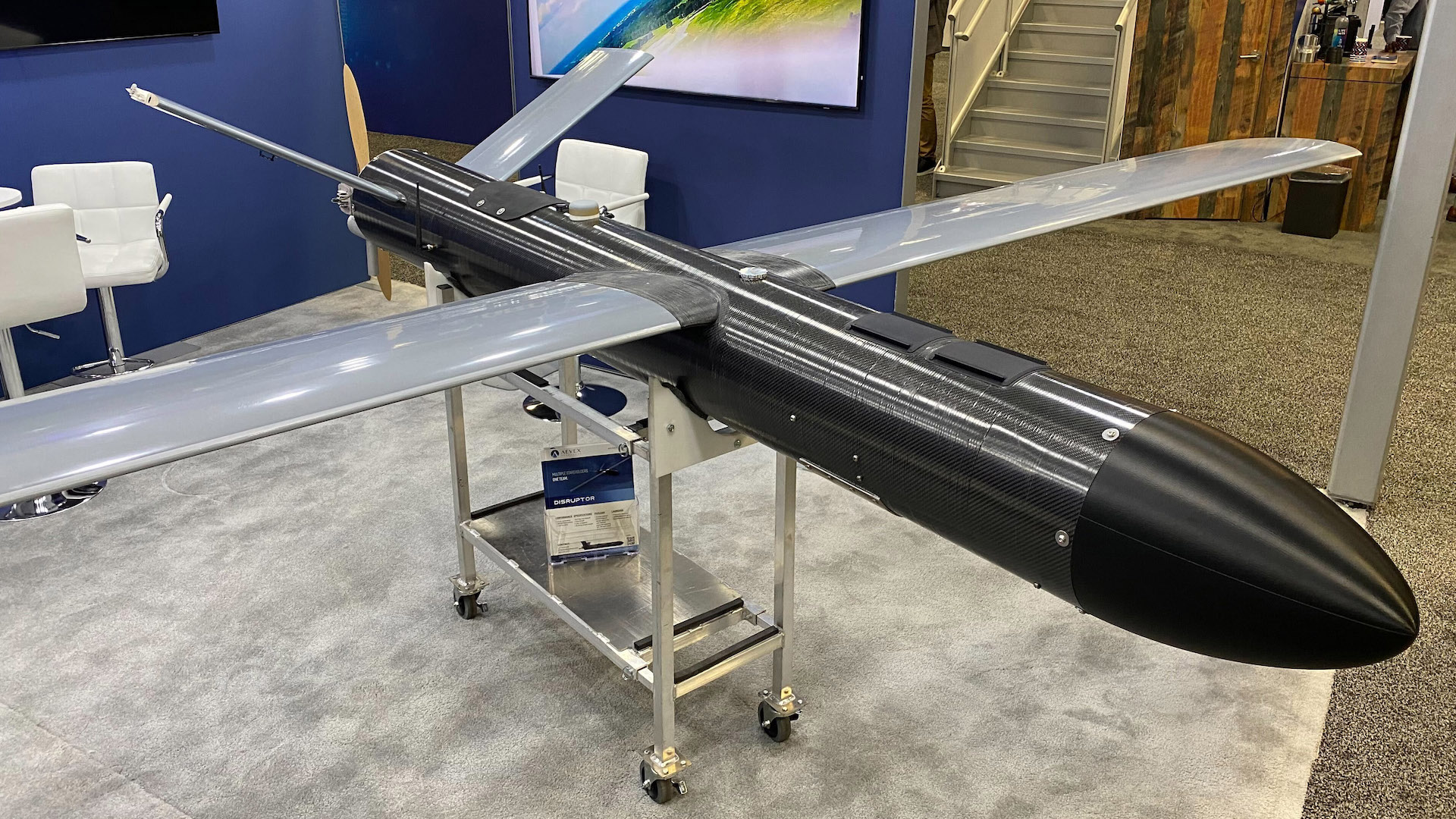The secretive Phoenix Ghost kamikaze drone, first developed for the U.S. Air Force and supplied to Ukraine in its ongoing fight against Russia, has finally emerged publicly. We now know for sure that Phoenix Ghost is not a single design, but a family of increasingly larger and longer-ranged one-way attack munitions from AEVEX Aerospace, some of which have been seen before, while at least one was only revealed this week.
AEVEX confirmed the connection between various kamikaze drones it offers and the Phoenix Ghost effort at the Association of the U.S. Army’s (AUSA) main annual symposium in Washington, D.C., this week. The Pentagon first announced Phoenix Ghost kamikaze drones provided by AEVEX would be headed to Ukraine back in 2022, but scant information about them had subsequently emerged before now.
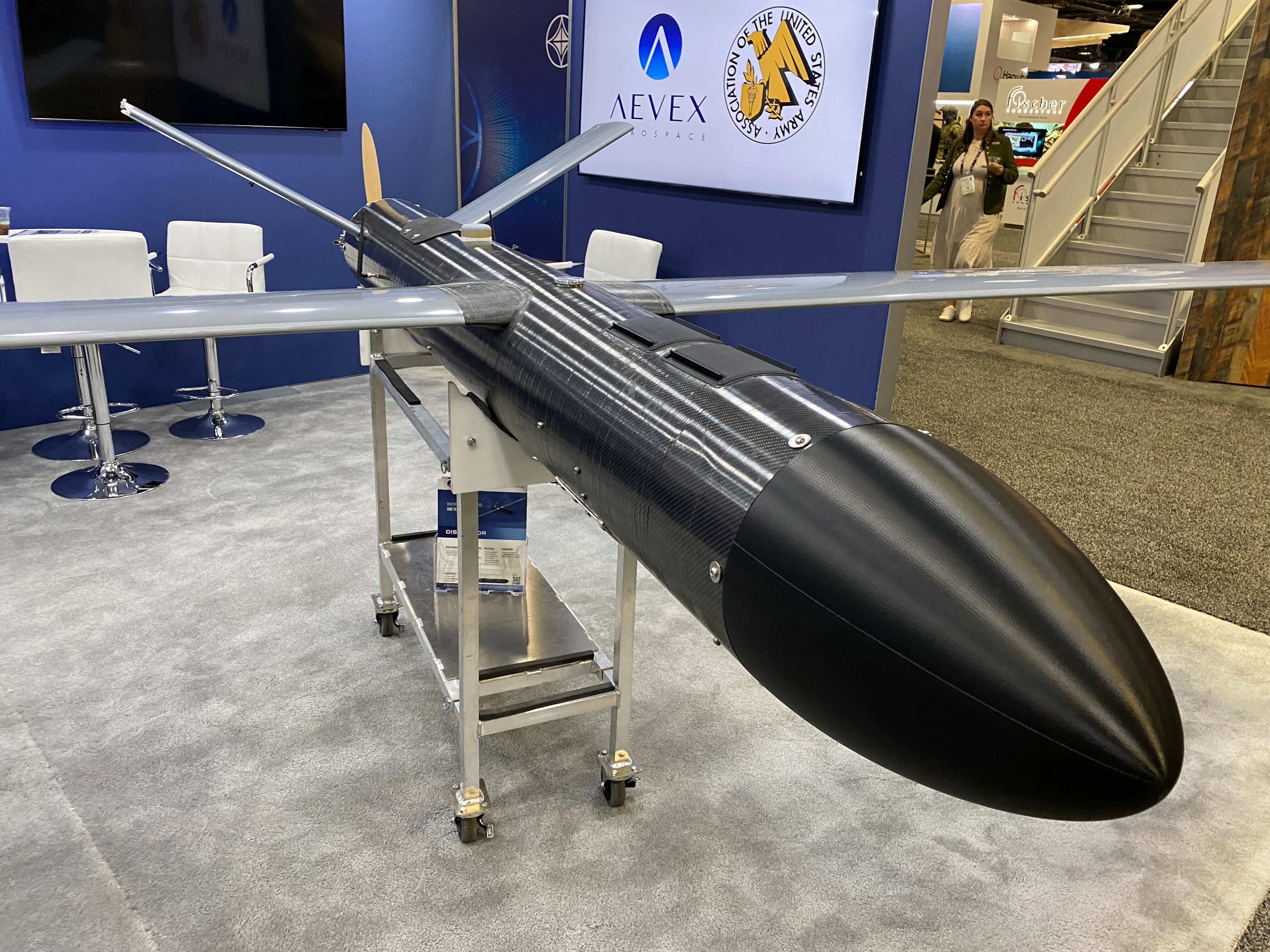
“It’s been a long time coming,” Elizabeth Trammell, senior director of business development at AEVEX, told TWZ Tuesday. “This has been around for a while … We’ve been able to receive specific permission to talk about it.”
The Phoenix Ghost family of one-way attack munitions includes types with distinctly different forms and performance capabilities. At least some of the designs were derived from aerial targets that AEVEX originally developed for testing counter-drone systems, according to the company.
Phoenix Ghosts were among the first kamikaze drones the U.S. military publicly announced it would be sending to Ukraine, but it had not been previously confirmed what they were and no conclusive imagery showing one had emerged before now. It is worth noting that the development of the Phoenix Ghost family, which traces back to a project under the Air Force’s Big Safari special projects office, also predates Russia’s all-out invasion of Ukraine in 2022. As such, AEVEX was very much ahead in the United States in working on one-way-attack drones, in general.
All “AEVEX loitering munitions use visual-based navigation to autonomously identify and follow landmarks or features in their environment, enabling precise positioning and pathfinding without reliance on GPS,” according to the company’s website. “Our systems leverage alternative PNT [precision navigation and timing] solutions to maintain precise navigation and operational capability in GPS-denied or degraded environments.”

In addition, “AEVEX loitering munitions automatically detect, identify, locate, report (DILR) and deliver lethal and non-lethal effects against threats across multiple scenarios and domains with unprecedented accuracy and speed” and are able to “navigate, make decisions, and complete missions without direct intervention,” the company says.
However, the drones can also be fitted with line-of-sight links and/or mesh networked radios, as well as electro-optical and infrared sensors, to provide some degree of direct control. In addition to acting as kamikaze drones, AEVEX says the uncrewed aerial systems in its product line can be configured for electronic and cyber warfare and intelligence, surveillance, and reconnaissance (ISR) missions.
Among the specific kamikaze drones AEVEX has now disclosed as being part of the Phoenix Ghost family are Dominator and Disruptor, which are in the so-called Group 3 category. The U.S. military defines Group 3 drones as weighing between 55 and 1,320 pounds, being able to fly at altitudes between 3,500 and 18,000 feet, and having top speeds of between 100 and 250 knots. While the Dominator was previously disclosed, Disruptor was only publicly unveiled this week.
Disruptor, which has a tubular carbon fiber main body, a pair of straight main wings, and a v-tail configuration, is 10.1 feet long and has a wingspan of 15.75 feet. It has a maximum takeoff weight of 185 pounds when launched pneumatically, but this can be increased to 205 pounds by using a rocket-assisted launch method. AEVEX also states that the Disruptor can be vehicle-launched, but has not provided any further details.
Powered by a small internal combustion engine driving a two-bladed pusher propeller, Disruptor can stay aloft for 4.5 hours and fly out to a maximum range of at least 372 miles (598 kilometers) with a 50-pound payload. The company also offers a version using electronic fuel injection (EFI), increasing its endurance to 11.6 hours and extending its range out to 822 miles (1,322 kilometers).
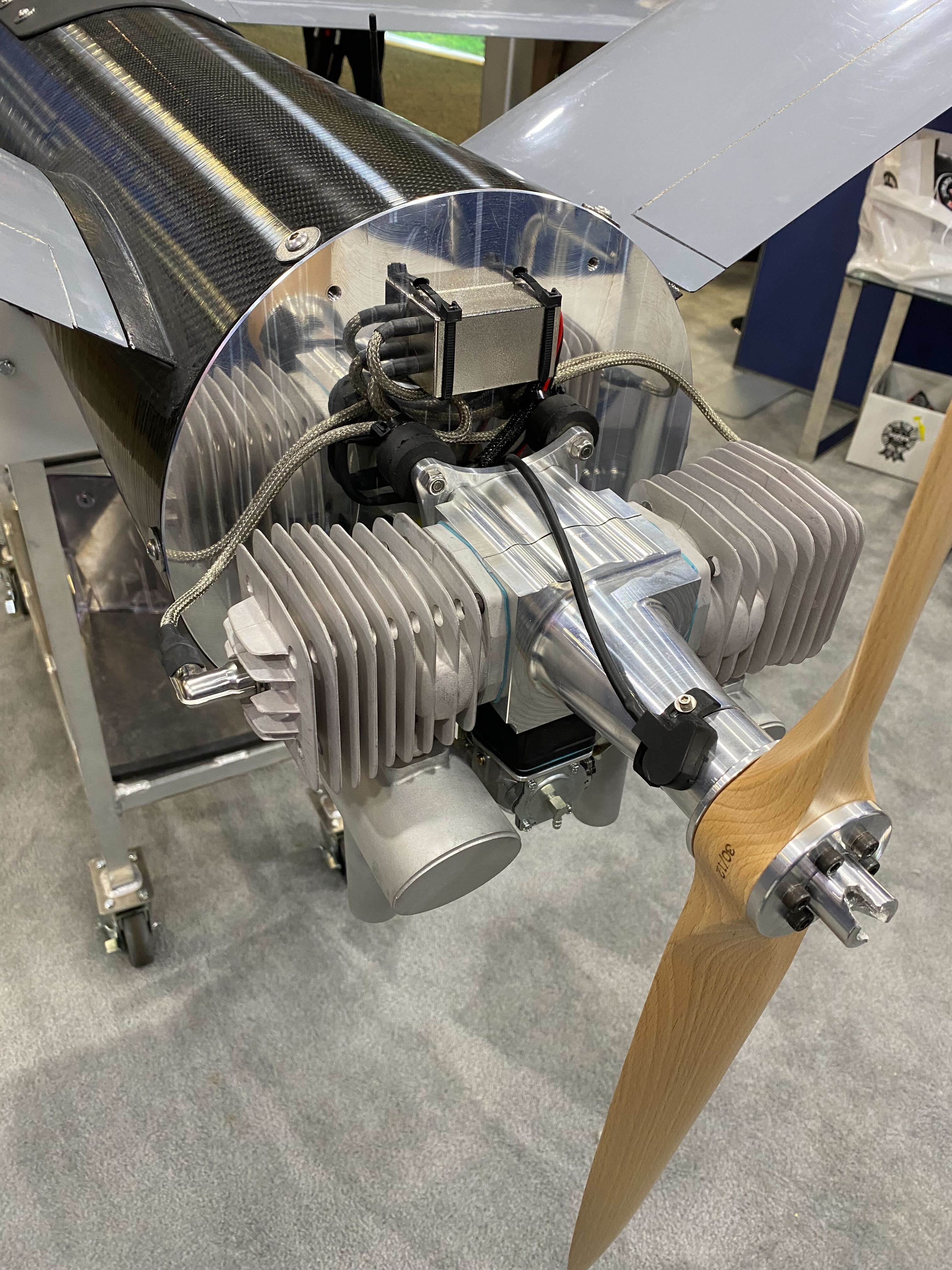
Disruptor is interestingly similar, at least in very broad strokes, to kamikaze drones that Iran has developed or helped its proxies develop, such as the Shahed 101.
AEVEX says the Group 3 Dominator is dimensionally identical to Disruptor in terms of overall length and wingspan, but it has a completely different twin-boom configuration with an inverted v-shaped tailplane. This a very common configuration for drones in this general size class, with the RQ-7 Shadow, which the U.S. Army announced plans to retire in Febraury, being just one example. There is also the Aerosonde family, versions of which remain in service with the U.S. special operations community. Other twin boom drones with v-shaped and straight tailplanes, including ones made in China, are also in widespread use globally.

Dominator has maximum takeoff weights of 205 and 225 pounds when launched pneumatically or in a rocket-assisted mode, respectively. With a similar, if not identical propulsion system to Disruptor, Dominator has maximum endurances of 4.6 and 11.7 hours and ranges of 293 and 743 miles (492 and 1,196 kilometers) with and without EFI.

The Phoenix Ghost family also includes a smaller Group 2 drone called Atlas, another design that AEVEX has previously shown publicly. Per the U.S. military definitions, uncrewed aerial systems in this category weigh between 21 and 55 pounds, can fly at altitudes up to 3,500 feet, and attain top speeds of up to 250 knots.
The Atlas, which has what looks to be pop-out main wings and v-tail, has a maximum takeoff weight of 20.9 pounds, including an 8.1-pound payload, and is 2.9 feet long and has a wingspan of 5.5 feet, per AEVEX’s website. Its stated endurance is between one and two hours, with a maximum range of at least 74 miles (120 kilometers). How Atlas is powered is not immediately clear, but it has a pusher propeller at the rear.

At AUSA this week, AEVEX had a product card detailing another drone called Dagger, which also does not appear to have been previously disclosed and looks to be a Group 2 analog to Disruptor. It is unclear whether the electrically powered Dagger is technically part of the Phoenix Ghost family or is a design that followed on from that work. Dagger is six feet long and has a wingspan of 8.7 feet, has a maximum takeoff weight of 35 pounds (including an eight-pound payload), and can fly for up to 80 minutes and out to a range of 120 miles (193 kilometers).
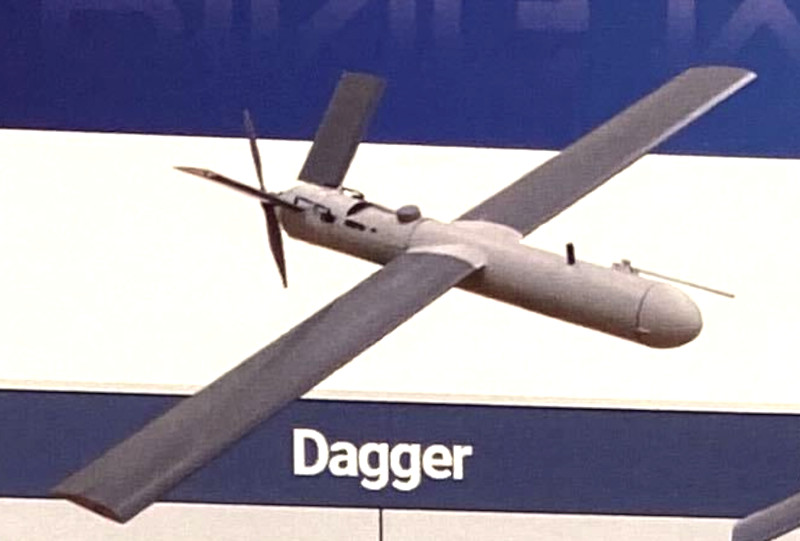
Dagger is designed to make it easier for troops to “move in, get out, set up, shoot off, and … get out of there,” AEVEX’s Trammell explained to TWZ at AUSA.
AEVEX’s Trammel also said that the Phoenix Ghost family encompasses multiple other assets that the company is keeping under wraps for now.
The company is also continuing to evolve its product line, in part based on experiences from the ongoing conflict in Ukraine. AEVEX uses a two-week design cycle to let the company quickly respond to new threats and conditions troops encounter on the ground.
“We’ve learned a lot,” Trammell said. “This [Distruptor] does not look anywhere near what it was when we first put it out.”
The nose cone has changed, she said, as has the color. She indicated the colors have evolved to better camouflage the weapons around the clock. Ukrainian officials notably began highlighting Russia’s use of black or otherwise darkly painted kamikaze drones, and that this had made it difficult to visually spot and track them, especially at night, last year. Ukraine has since been observed employing kamikaze drones with similar paint schemes.

As the war in Ukraine grinds through its third year, Trammell also expects demand will grow for the drones to collect more intelligence and play a larger role in electronic warfare. AEVEX is also known to be looking at enhancing Phoenix Ghost’s resistance to GPS jamming, something that has been a significant problem in Ukraine, for both drones and guided munitions. The company says its acquisition of Veth Research Associates should see that company’s guidance and navigation technology inserted into Phoenix Ghost drones, according to Aviation Week.
When it comes to Ukraine, it remains unclear what types of Phoenix Ghost drones the country has received to date and how they are specifically configured in terms of payloads and guidance capabilities. To date, the U.S. military has pledged at least 1,800 Phoenix Ghosts to Ukraine. The U.S. military said had obligated approximately $576 million for the purchase of drones in this family from AEVEX for the Ukrainian armed forces through the Ukraine Security Assistance Initiative (USAI), as of August.
AEVEX was shipping around 230 loitering munitions each month at the height of its deliveries, and is still delivering fresh weapons every two weeks, Trammell told TWZ.
Back in April 2022, then-top Pentagon spokesperson John Kirby did say that the Phoenix Ghost drones Ukraine was getting had similar, “but not [the] exact,” capabilities as the AeroVironment Switchblade 300 tube-launched loitering munition, which could point to the smaller Atlas or Dagger. However, officials added at that time that there are differences “in the scope of capability for the Phoenix Ghost.”
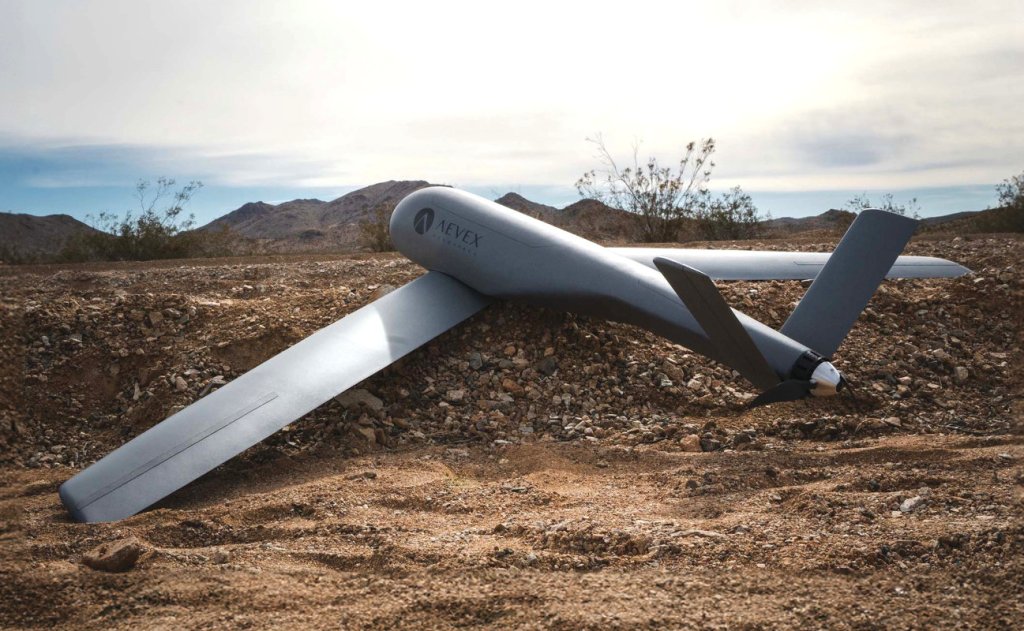
Kirby’s statement is one of a number of signs that had emerged before this year’s AUSA gathering pointing to Phoenix Ghost actually being a family of drones and that Ukraine had received multiple types, something David Hambling just explored in more detail for Forbes last month.
“It’s a system of systems that varies in range and payload and type,” Skip Arny, a Vice President at Aevex Aerospace, also said about Phoenix Ghost at the AUSA show in 2022, according to Defense News. “It’s a great example of a quick-reaction capability, and we basically got a request to put a system together, and that’s what it is.”
Just this summer, pictures also began to emerge of a drone design that had not been previously observed in use by Ukraine, which independent defense analyst H.I. Sutton noted on his website Covert Shores looked similar if not identical to the AEVEX Dominator. Questions have been raised about whether these drones are actually Dominators or are a local derivative or clone of some kind given that they were reportedly recovered in Russia. The U.S. government has, at least from what is known publicly to date, placed significant restrictions on the use of American-supplied munitions against targets inside Russian territory, but various exceptions and caveats are also known to exist. Drones can stray from their intended flight paths for various reasons, too. Ukraine’s arsenal of longer-range kamikaze drones has otherwise steadily expanded in the past two years, predominantly through the fielding of new domestically developed types.

Not knowing what kinds of Phoenix Ghost drones Ukraine has or how they are configured, it is also unclear what kinds of target sets the drones are being employed against.
“We haven’t really gotten into anti-tank or anti-armor, just because it’s not been a requirement for us,” AEVEX’s senior director of business development Trammell told TWZ at AUSA this week. “A lot of our aircraft, we had the base capability and then our customers came in and said, ‘This is what we want.’”
Trammell’s mention of “customers” plural also raises questions about who else may have received Phoenix Ghost drones. As of June, AEVEX had reportedly delivered 4,000 drones under U.S. military contracts, well beyond the 1,800 Phoenix Ghosts publicly committed to Ukraine through USAI.
It is certainly possible that the Ukrainian military has received more Phoenix Ghosts than is publicly known, but demand for various tiers of kamikaze drones is also growing globally.
Earlier this year, the U.S. government approved the potential sale of more than 1,000 kamikaze drones, a mix of Switchblade 300 and ALTIUS 600M types, to Taiwan. That comes amid broader U.S. military plans to help the island turn the airspace and waters around it into a “hellscape” full of uncrewed platforms in the event of an invasion from the mainland, as you can read more about here.


The now routine use of multiple tiers of kamikaze drones in the conflict in Ukraine has helped push the Taiwan “hellscape” plans forward and is also driving efforts across the U.S. military to acquire and field these types of uncrewed aerial systems. Last year, the Pentagon kicked off an initiative dubbed Replicator specifically with the goal of helping get thousands of new and relatively cheap uncrewed platforms with high degrees of autonomy into the hands of U.S. forces across all domains by 2025.
In August, the Army awarded an especially massive contract valued at nearly $1 billion to AeroVironment for Switchblade 300 and 600-series drones, which is now the subject of a formal protest.
“There are a lot of companies in this space, so Switchblades are one of our first efforts here, but it’s not going to be our last or our only one,” Doug Bush, the Assistant Secretary of the Army for Acquisition, Logistics, and Technology, told TWZ and other outlets at a media roundtable on the sidelines of the AUSA conference this week. “I think you will see soon a diversity of companies getting contracts for that kind capability. It’s a really healthy part of industry. We don’t have, like, just one place to go.”
Each branch of the U.S. armed forces — particularly the Army and Air Force — has been interested “in some way, shape or form” in AEVEX’s product line, Trammell told TWZ.
Furthermore, “as the conflict [in Ukraine] dwindles, there’s other opportunities that this can go for,” she said. “There’s a lot of big programs that are looking for midsize UAS systems, and we’re trying to advertise to that.”
Still, the experience AEVEX has now gained from working on the now less-secretive Phoenix Ghost effort for Ukraine could give the company an important leg up as kamikaze drones continue to make their mark worldwide.
Contact the author: thomas@thewarzone.com
